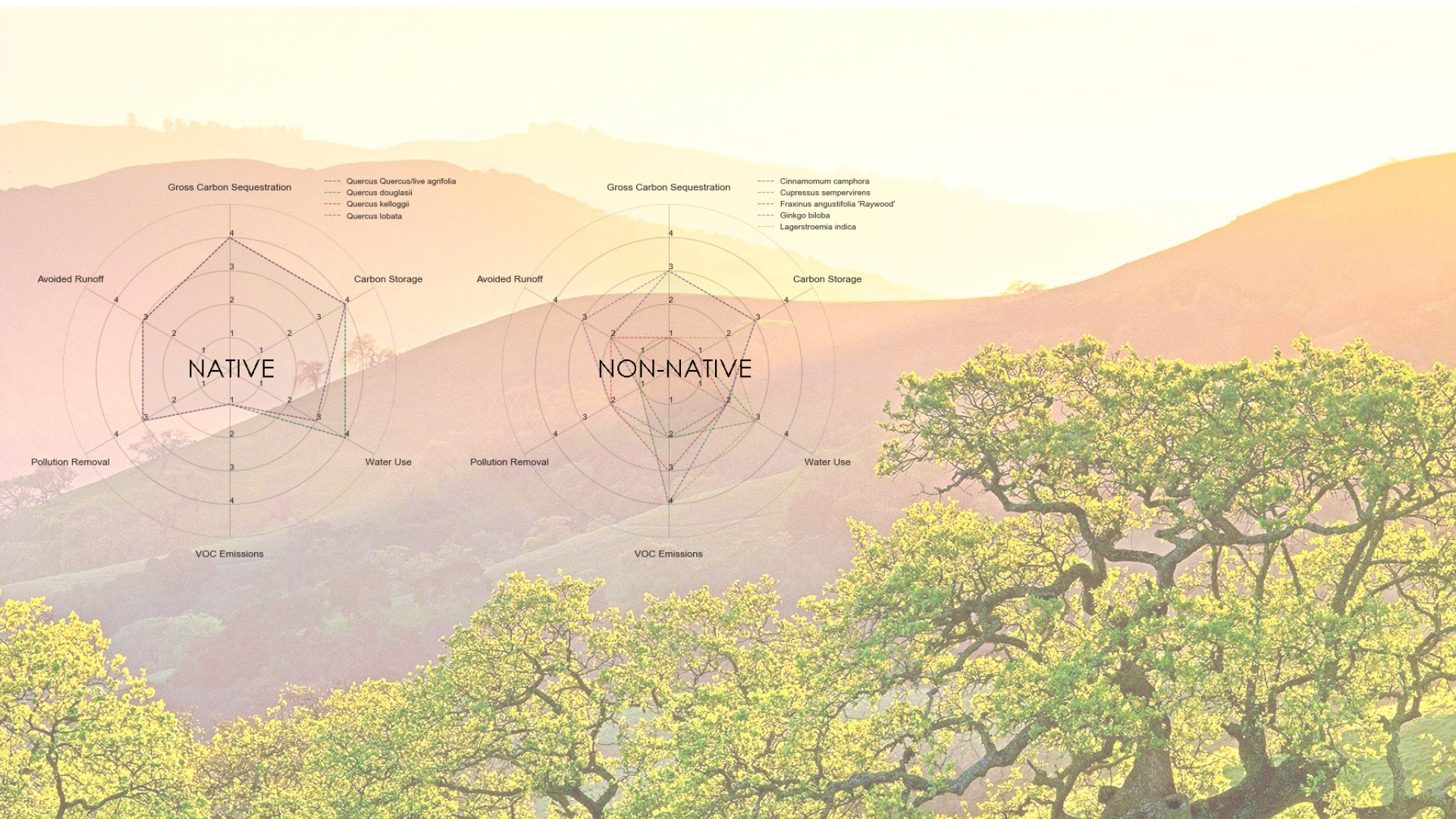Executive Summary
This research was facilitated by the San Francisco Estuary Institute (SFEI) and contributes to ongoing research on urban ecology in Santa Clara County, California. As a team, we explored the variation in ecosystem services provided by native and non-native street trees, and measured trade-offs between the services and disservices provided by different species.
Our analysis included three components: A Dummy Dataset, a street tree inventory of Santa Clara County, and a spatial analysis. The “Dummy Dataset” included 50 individuals of each species of street tree found in Santa Clara County, with each tree assigned a hypothetical diameter at breast height (DBH) of 1 to 50 inches. The second analysis used an inventory of street trees in Santa Clara County with the measured DBH of each tree. We ran both datasets through the US Forest Service i-Tree software, which calculates ecosystem services provided by individual trees. The results of the i-Tree calculations were then assigned to the location of each tree and analyzed spatially.
The results from the Dummy Dataset yielded the following insights:
• Several ecosystem services are highly correlated, and the list of top ten performing species or genera is similar across some of these services.
• Native oak trees tend to perform well from an ecosystem services perspective, but release more VOCs than non-native trees.
From the Santa Clara County inventory, we determined that:
• Across all native and non-native street trees included in the inventory, native species’ ecosystem services increase more rapidly with DBH than do ecosystem services provided by non-native species.
• Among the 15 native and 14 most common non-native trees, natives have a higher proportion of low water-use level species and individual trees.
The spatial analysis of the Santa Clara County street tree inventory showed that:
• Native trees in general, and native oak trees specifically, are underrepresented among Santa Clara County’s street trees.
• Native oak trees provide a disproportionately large amount of ecosystem services, and the ecosystem services provided per oak tree is especially high in areas with statistically significant clusters of native oaks.
Native species provide not only ecological benefits, but also ecosystem services that benefit people. Our findings support the case for planting more native species, particularly native oak trees in Santa Clara County.
